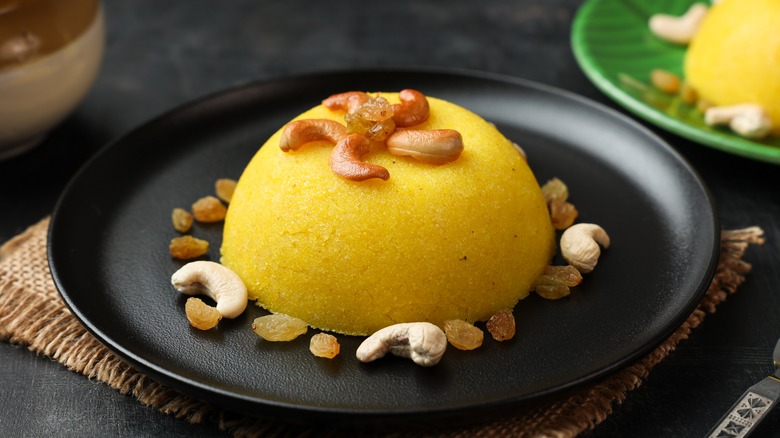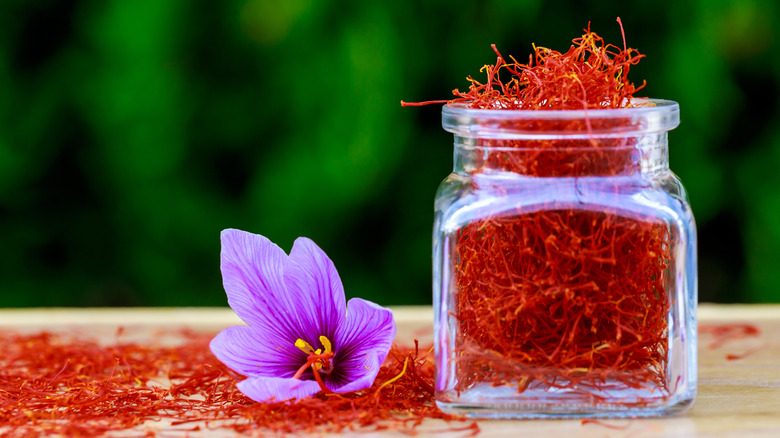Kesari Is The Indian Dessert That Shines Bright From Saffron
Adapted from an ancient Ottoman dessert called irmik helvasi, kesari became popular in South India in the 18th century. Kesar is the Hindi word for saffron, which is the colorful spice that gives the dessert its iconic warm yellow hue. As a South Indian dessert, kesari is more commonly called kesari bath or rava kesari. Rava is what South Indians call semolina flour (North Indians call it sooji), which is the other primary ingredient for the dish. Alongside the semolina flour and saffron, a typical kesari recipe includes cashews, raisins, sugar, and ghee. Some recipes will add pineapple or other nuts as a spin on the classic. The dessert has an interesting texture that melts in your mouth, halfway between a moist cake and thick pudding; the cashews give it a nutty savoriness, while the sugar and ghee give it the decadence of a dessert.
Kesari is most commonly associated with big social gatherings like festivals and weddings, but it's also eaten as a sweet breakfast treat. It's considered a type of halwa or Indian pudding (the Ottoman irmik helvasi dessert that kesari stems from translates to semolina halwa). It's often eaten on its own, but kesari can also be served with vanilla ice cream or sweet yogurt.
Saffron is kesari's crown jewel
Saffron is famous for being the world's most expensive spice — a pound of it would cost you several thousand dollars. It's likely, because of the cost, that some restaurants and bakeries will make rava kesari with orange food coloring instead of using the real thing. Naturally, kesari made with real saffron is considered higher quality.
There are two ways saffron is typically added to the dessert. The first way is to boil a few strands of saffron in some water and then add the water to the dish about halfway through the cooking process. Other recipes have you add the saffron directly into the pan while heating the water that will cook the semolina flour.
India is the world's second-largest saffron producer so it's no surprise that the region has a popular dessert that revolves around it. One would think that the Northern version of the dish would contain saffron since that's where it's produced, but it's actually a specialty of the South. In the North, they have a similar dessert to kesari called suji ka halwa which is nearly identical to kesari minus the saffron.

